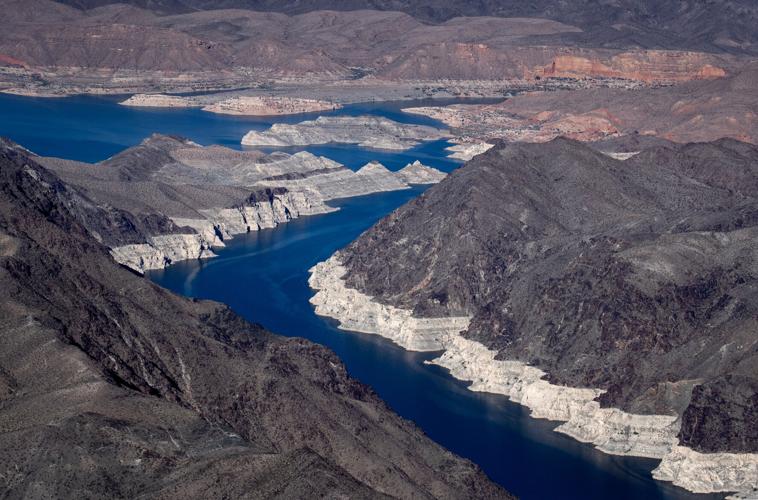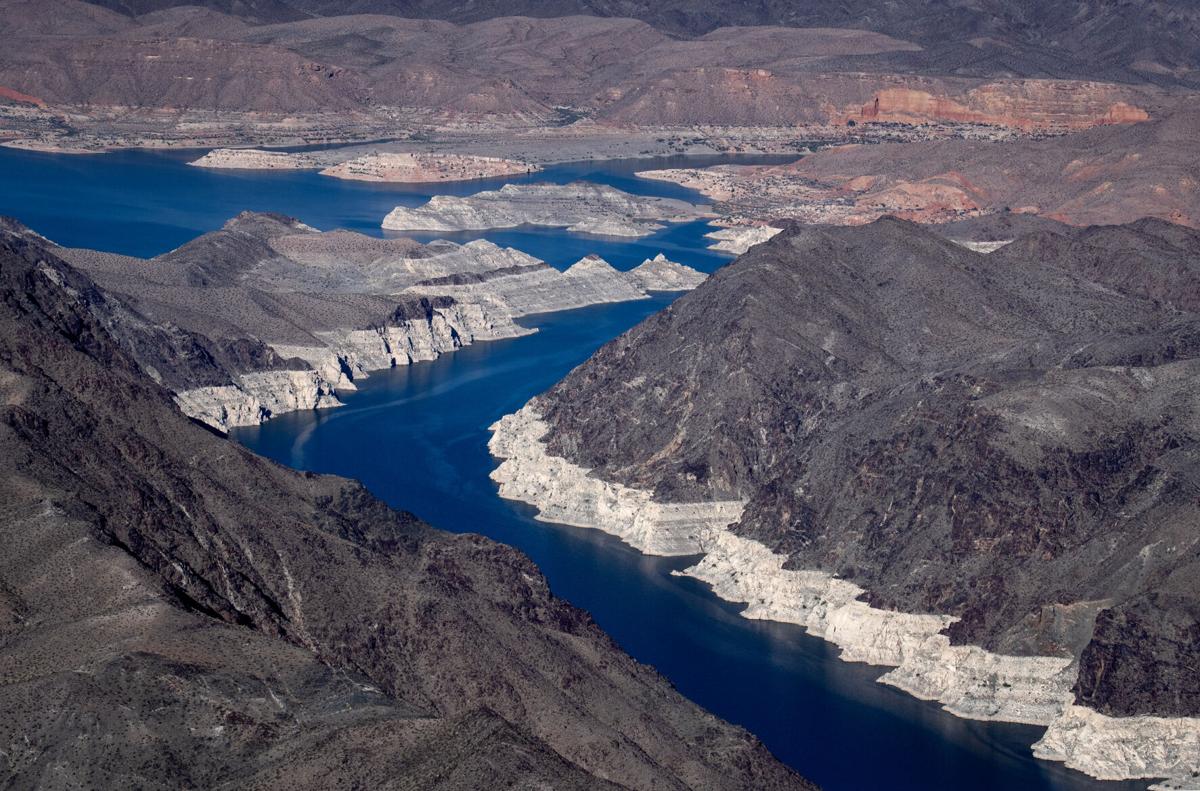The problem, as always, is that water keeps flowing from the tap.
Every other indicator is telling us we should be in red alert right now about Arizona’s climate and water situation.
But when we turn the valve, even on these blazing days, drinkable water flows.
It’s a luxury in this season and this place. And it makes it easy to turn away from the news. But we shouldn’t.
This week alone:
Lake Mead, the source of Central Arizona Project water that we use in Tucson, reached a record-low level as the lake plunges even faster than expected in our hotter climate.
Wildfires burned large areas of Eastern Arizona and started in other places around the state on land desiccated by extreme drought.
Tucson said it will close a water treatment plant serving 60,000 people because of groundwater pollution.
Possible record-high temperatures are forecast to settle in for a week, as highs top 110 degrees and lows may not drop below 80.
It should be a come-to-Jesus moment. Another one.
But the signs are we aren’t, as a general public in this state or metro area, experiencing the conversion we need to accommodate the Arizona of the future.
Gov. Doug Ducey has called the Legislature into special session — to deal with wildfires. That’s fine, I suppose, though the Legislature was already in session. But wildfires are really just the dramatic outcome of the deeper problems we should be dealing with.
Ducey has acknowledged the drought and that humans contribute to climate change. The Arizona Department of Water Services has also been working to assure our water supply in the face of dwindling flows in the Colorado River, including by initiating withdrawals of water stored by the Arizona Water Banking Authority.
This is crucial, because Lake Mead has dropped to such a low level that it will trigger cuts to Arizona’s Colorado River supply next year.
But as a body, the state Legislature and government have not confronted climate change comprehensively. Sen. Kirsten Engel, a water expert and Tucson Democrat, told me she wishes the special session were dealing more broadly with drought and climate change, not just fire.
She noted that none of her bills on climate change got a hearing in the GOP-controlled Senate, even one that would simply have established an “Arizona climate-resiliency planning group.”
It would consist of representatives from government and industry and would only have advisory power. But the bill would have asked the group to identify measures that could reduce Arizona’s greenhouse-gas emissions by certain amounts at certain dates. Can’t have that.
Neither will the Legislature entertain any significant measure on groundwater pumping in the majority of the state that lies outside its five active management areas. Legislators, Democratic and Republican, file bills every year, but they rarely even get a hearing. We can’t even get legislators to require that meters measure groundwater pumping, let alone put restrictions on pumping as water levels sink.
Now, in Tucson, groundwater is a secondary source of water, compared to our Central Arizona Project supply. Still, 5% to 6% of the utility’s water has come from groundwater over recent years.
So, when Tucson Water announced it will close the TARP water treatment facility on the south side, that meant the 60,000 customers will largely be supplied from CAP water now.
The city has assured us that it will not affect the water supply, which is good, of course. But there has been no significant request for more conservation from customers, which I view as a missed opportunity.
Last year, 2020, marked the first year this century in which Tucson Water’s residential customers used significantly more water than the year before. We used 7.5% more water per capita in 2020 than in 2019.
There have been two other years of slight increases this century, but nothing like that. It shows that we have apparently reached a climatic limit on the conservation ethic that Tucson has adopted over decades.
It appears the increase in usage was due to Tucson experiencing its driest and second-hottest year on record, said James MacAdam, of Tucson Water.
“The greatest suspect is the fact that we didn’t get any rain all summer,” he said. “If you watch the daily demand, when we get rain, it responds — it goes down.”
Assuming that we are going to have more summers like 2020 in the future, that means we’re going to have to adopt a stricter, or at least more creative, conservation ethic than the one adopted decades back. But what we hear from Tucson Water is that, pollution problem aside, our water situation is OK.
“Overwhelmingly, the Tucson Water message has been ‘we have 50 years of water stored — not to worry, if you’re in the Tucson service area,’” said Alison Jones, a hydrogeologist who is vice chair of the Citizens Water Advisory Committee.
“The thing I worry about is not just being able to turn on the tap and get water, but what happens in the desert? Is Tucson going to be surrounded by a dead desert?”
The same question applies statewide, of course.
We can of course all take individual measures. I plan on tightening up my irrigation system this weekend and hope soon to join the crowd of Tucsonans actively harvesting rainwater by adding a storage tank or two to collect roof water. Tucson Water has rebates for some of these activities.
But this confluence of events should lead us to bigger reconsideration of where we’re at, and a more ambitious program of conserving the water and climate that we’ve got.
Tim Steller is an opinion columnist. A 25-year veteran of reporting and editing, he digs into issues and stories that matter in the Tucson area, reports the results and tells you his conclusions.
Contact him at tsteller@tucson.com or 520-807-7789. On Twitter: @senyorreporter







